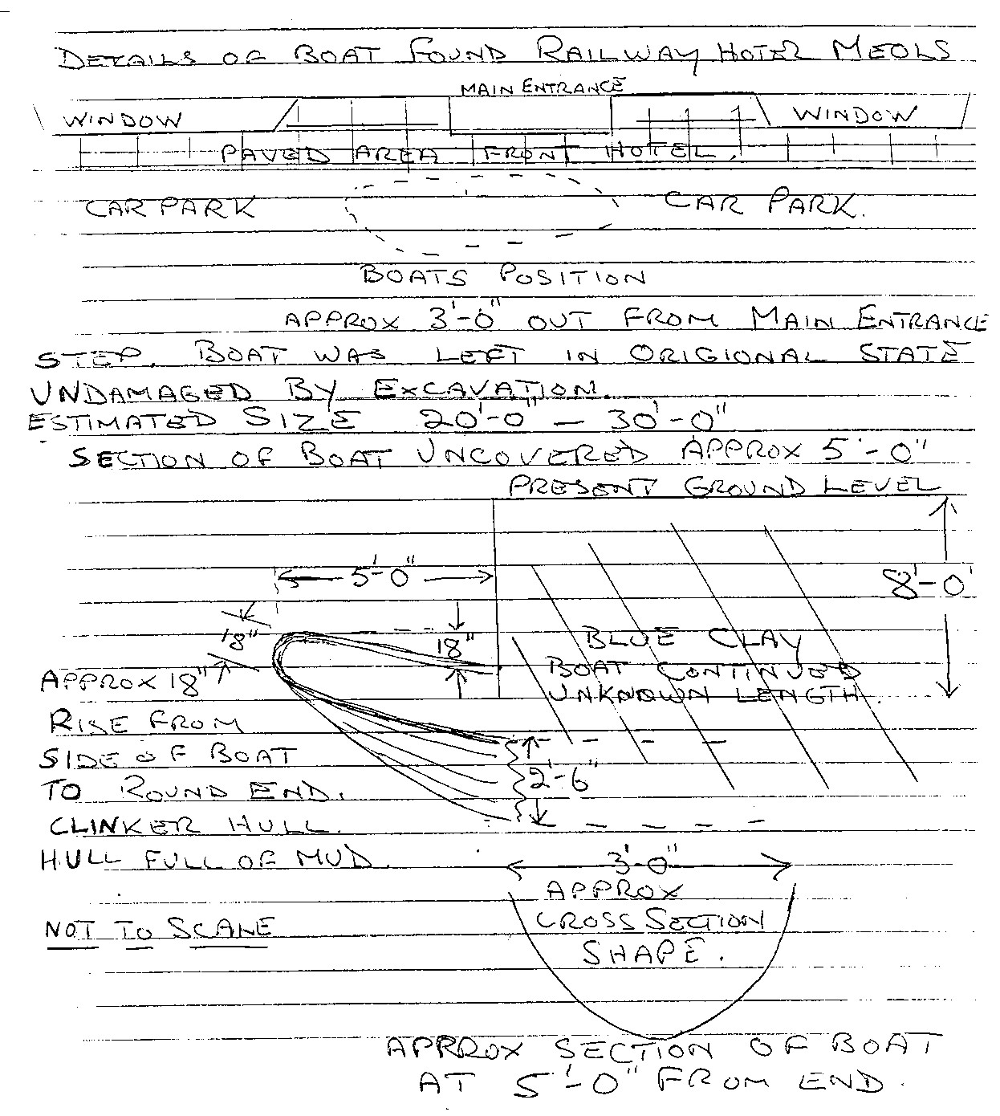In 2007, Professor Stephen Harding and a team of archaeologists from the University of Nottingham brought attention to a possible Viking boat buried under the car park at the Railway Inn, Meols.
In 1938, workmen laying the car park first spotted the remains. But with the risk that an archaeological dig would delay building work, the find was kept secret. One of the workers, however, made a few notes, and in 1991 his son produced a report and a sketch. The report was brought to the attention of the current landlord, and so the Nottingham team was brought in, conducting a Ground Penetrating Radar survey of the location.
Viking boat survey
The survey seemed to show a ‘boat-shaped anomaly’ in the underlying clay. Further survey will assess the potential for an evaluation excavation.
The Viking boat find is particularly interesting from a landscape point of view. The pub is over a kilometre from the coast, and even further from the medieval shore. Professor Harding suggests that a flood may have washed the boat inland. Another possibility is that it sunk in one of the many marshes which covered the area at the time.
Old Norse field and track names are all over the area. It wasn’t unknown for the people of the time to drag their ships substantial distances inland if necessary.
A re-assessment in January 2008
After much speculation about the Viking boat being discovered under the car park of the Railway Inn, Meols, staff at World Museum Liverpool’s Field Archaeology Unit wrote an article outlining the ways in which archaeologists must go about deciding what to do with the buried vessel. As well as damping down runaway speculation as to the age of the boat, the piece gives an excellent insight into how field archaeology works in general when considering the need to excavate buried remains.
Michael Stammers, keeper of the Merseyside Maritime Museum at the time of the original report, noticed that the boat most closely resembled one of the Kentmere boats, dated to AD 1320 ± 130. This is much later than the Viking age in the north west of England.
In essence the Field Archaeology article concludes that the boat is not under threat, would cost millions to raise, and would probably cause more harm than good were it to be exposed to the elements. Furthermore, there is no conclusive evidence as to the date of the boat, with some evidence actually refuting claims that it originates in the mid to late part of the first millennium AD.
Plans for an excavation
Professor Steve Harding, perhaps the name most closely identified with research into Viking Wirral, said in September 2022 that he hopes to fund an excavation.
As noted above, the costs of digging up the boat and preserving it properly are great, and can’t be started without proper planning. However, he pinned the cost at £24,500, and started fundraising. An earlier attempt to get lottery-based funding was interrupted by the Covid-19 pandemic, so he now hopes to raise the money from anyone interested in helping. An article on his blog from January 2022, called The boat beneath the car park, gave details on the latest developments.
As of December 2022, the boat remains under the Railway Inn.
Further reading
Current Archaeology, Issue 213: p4-5.
Wirral & West Lancashire Viking Research Page
Norse by North West – Liverpool Echo article on DNA analysis done in Liverpool by Professor Harding
Viking Mersey, by Stephen Harding, is available from Amazon UK
Image: notes taken in 1938 by one of the workmen who discovered the boat.


Leslie James Payne
says:Was the “Viking Ship ” in Meols ever excavated?
I was brought up in Moreton and would take a bike ride to Hoylake, where me Dad worked at Ashfield Farm Dairy.